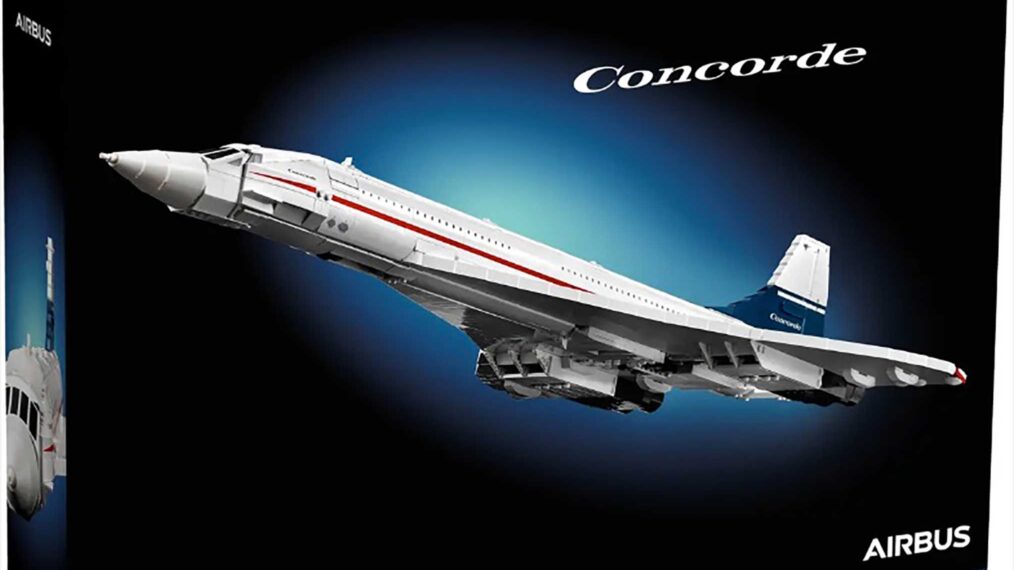LEGO Goes Supersonic With New Concorde Set

A roundtrip ticket from London to New York on Concorde would cost you $12,000.
A ticket on LEGO’s new Concorde set will cost a mere $200.
LEGO announced that the legendary supersonic passenger jet will be available as a LEGO Icons set (10318) in September.
Prepare for take-off… pic.twitter.com/wPyBhkjXXd
— LEGO (@LEGO_Group) August 8, 2023
The model has 2,083 pieces and measures 42 inches long, so you’ll need a big section of runway somewhere on a shelf in your home or office.
LEGO’s Concorde features the signature “droop nose” that allowed the flight crew to see the runway through the windscreen during landing. It also has retractable landing gear that can be controlled by turning the tail section. Opening a top section of the fuselage reveals cabin seats and two lavatories. Control surfaces on the wings and tail can be adjusted. The whole model can be placed on a display stand with an elegant ’60s-style plaque.
Growing up as an aviation buff in the early ’80s, Concorde captured my imagination. It still does, even 20 years after it was retired from commercial service. It was a marvel of engineering, a joint venture of British and French corporations to build the world’s first airliner that could travel faster than sound. The time of transatlantic flights could be cut in half. And it just looked damn cool, unlike any other plane on Earth.
That remarkable technology came at a price. Concorde was way over budget and was long-delayed in joining airlines’ fleets. In the 1960s, carriers had placed orders for more than 100 aircraft, but most of those orders were canceled in the early 1970s. Only 20 Concordes were built, and only 14 of them flew commercially with Air France and British Airways.
Concorde chugged fuel and was expensive to fly and maintain. Sonic booms prevented Concorde from being flown to mach speed over U.S. soil. Passengers complained of tight cabin space and noisy engines. Though in-flight service and amenities were luxurious, the price of a ticket meant only the wealthiest travelers could partake. In 2000, Concorde had its only catastrophic failure when Air France Flight 4590 crashed, killing 100 passengers, nine crew members and four people on the ground.
Air France and British Airways retired Concorde in 2003, and the remaining airframes can be seen at museums in the U.S. and Europe.
Twenty years later, Concorde remains the only supersonic commercial airliner, though there is hope 21st-century aerospace technology and fuel efficiency will bring the legacy of Concorde back to life in the near future.
